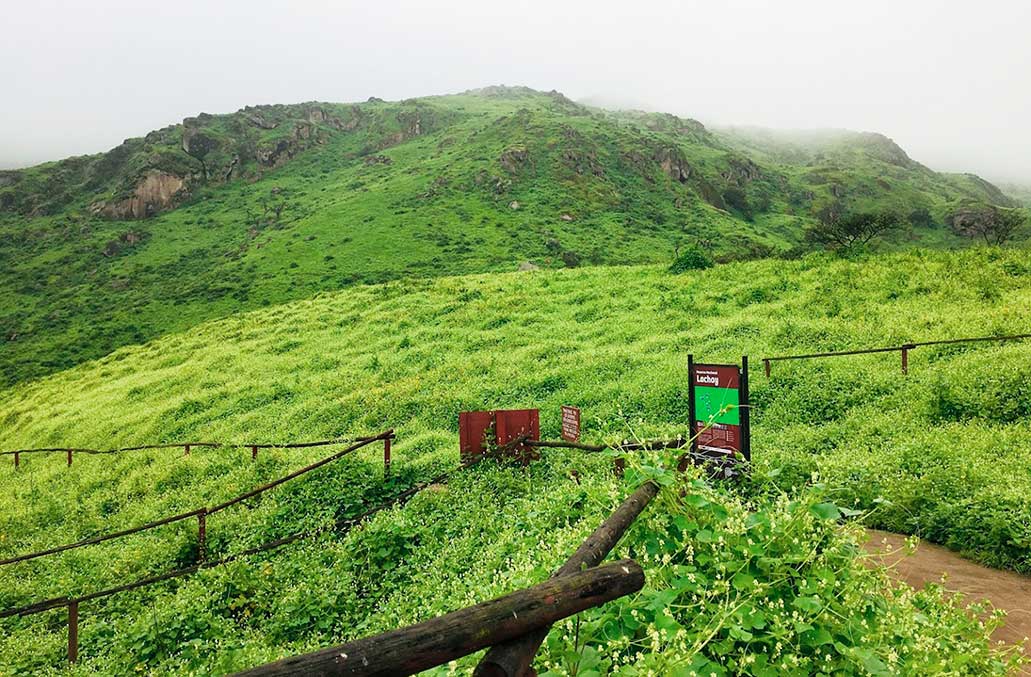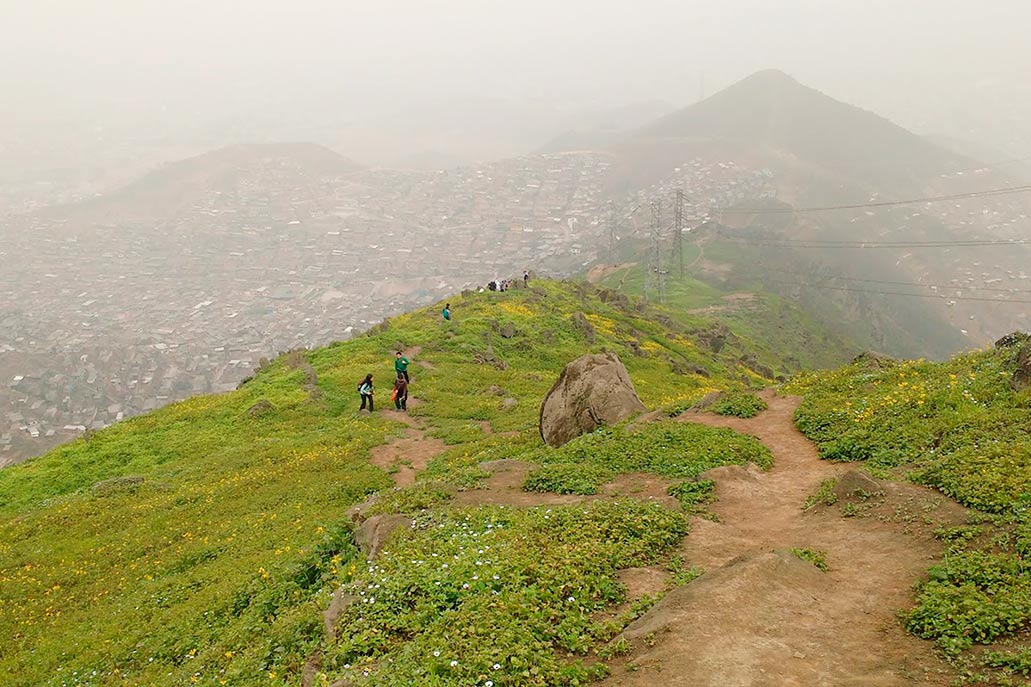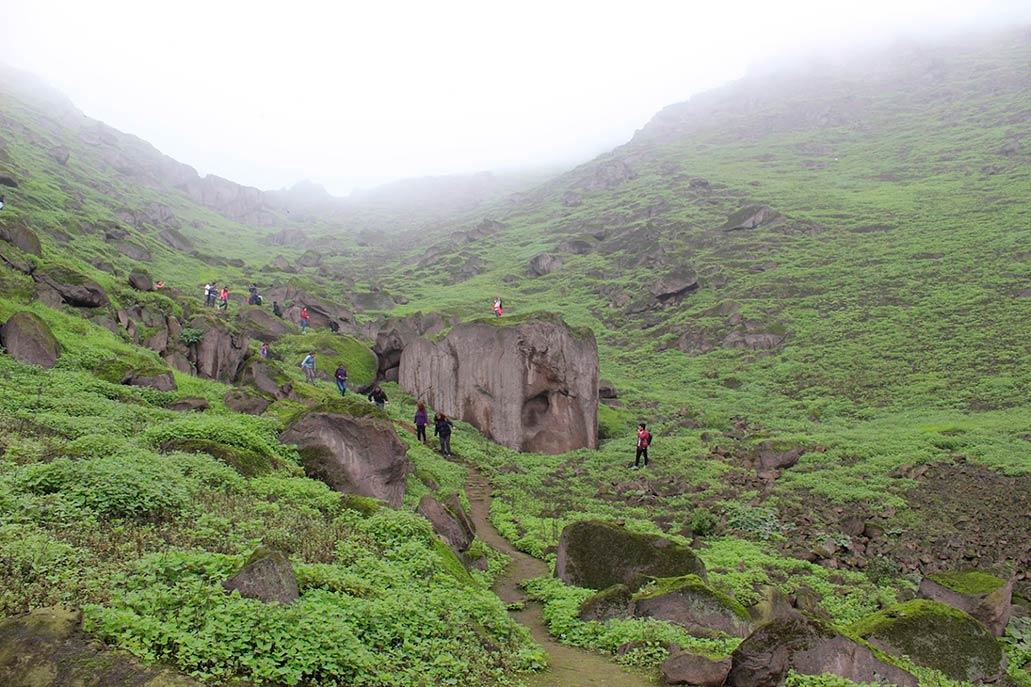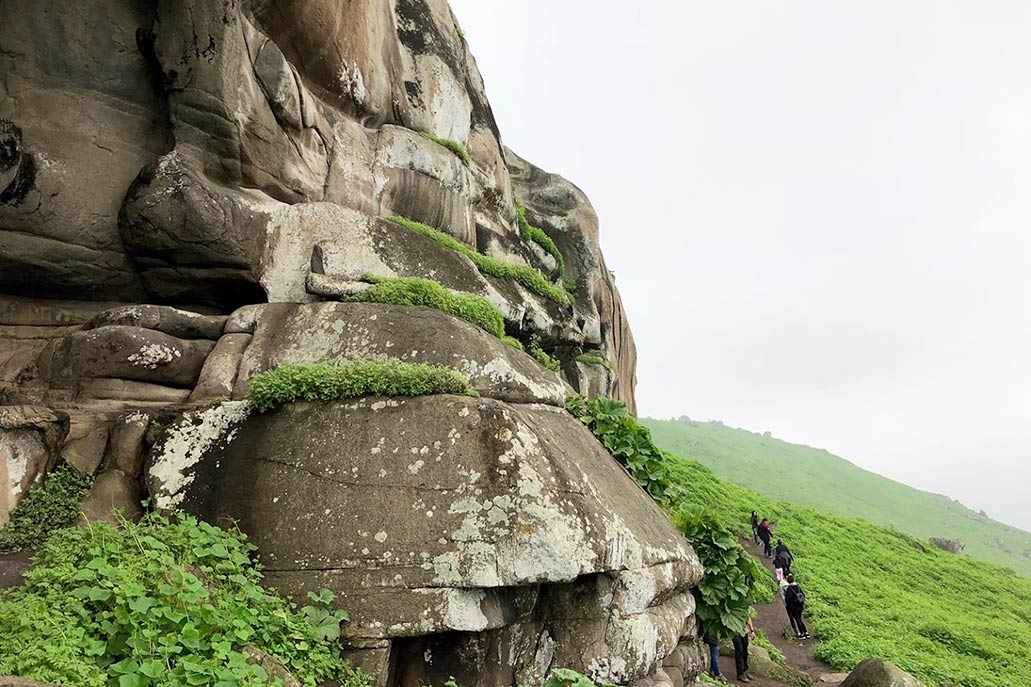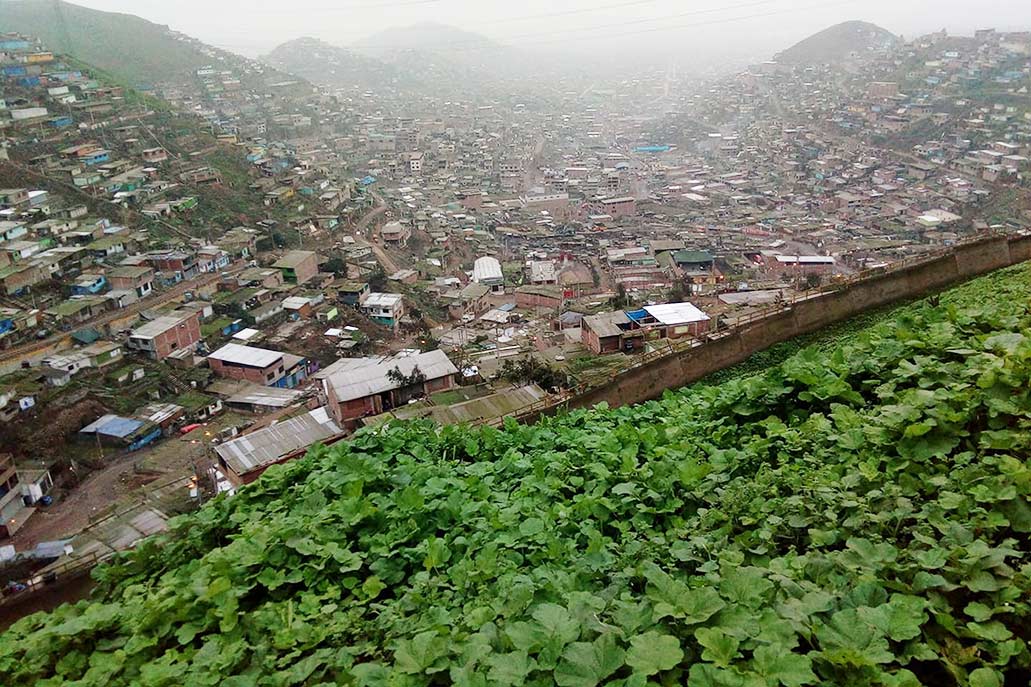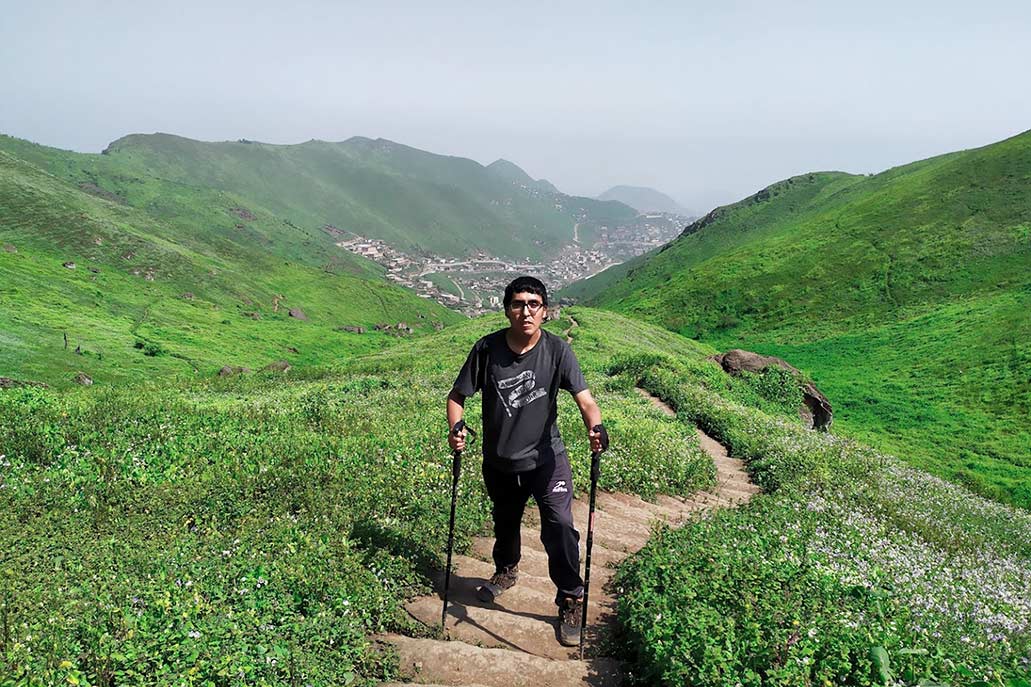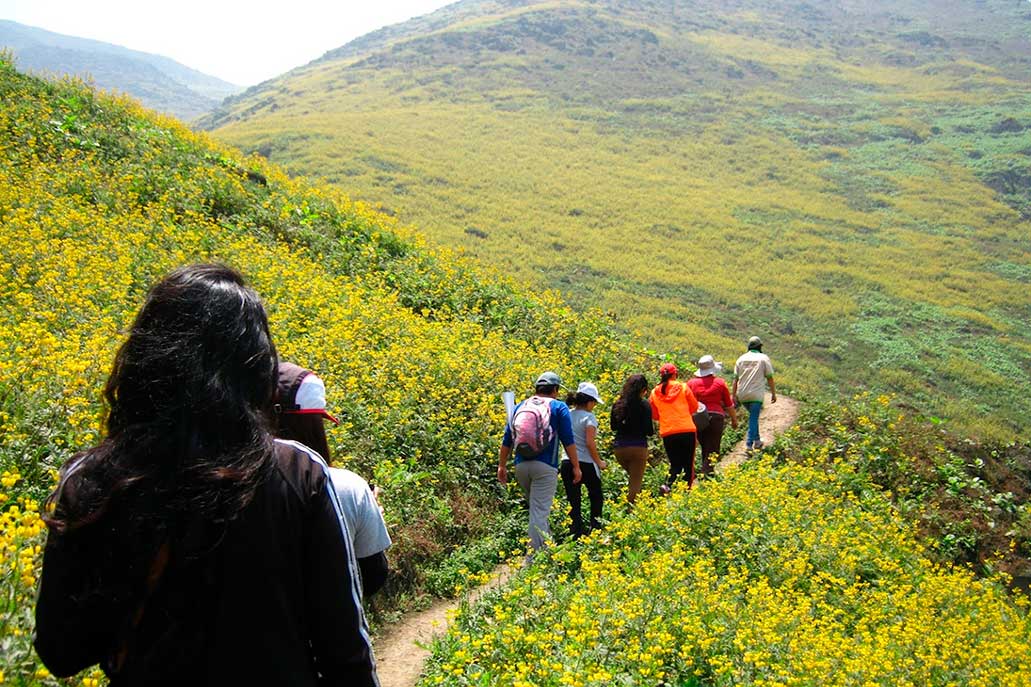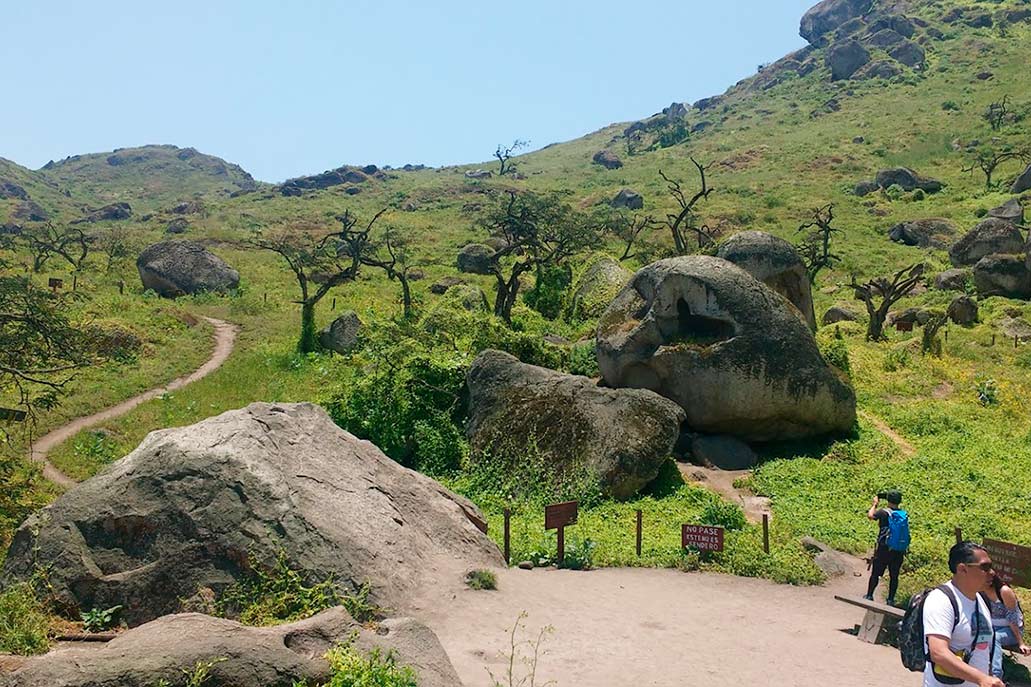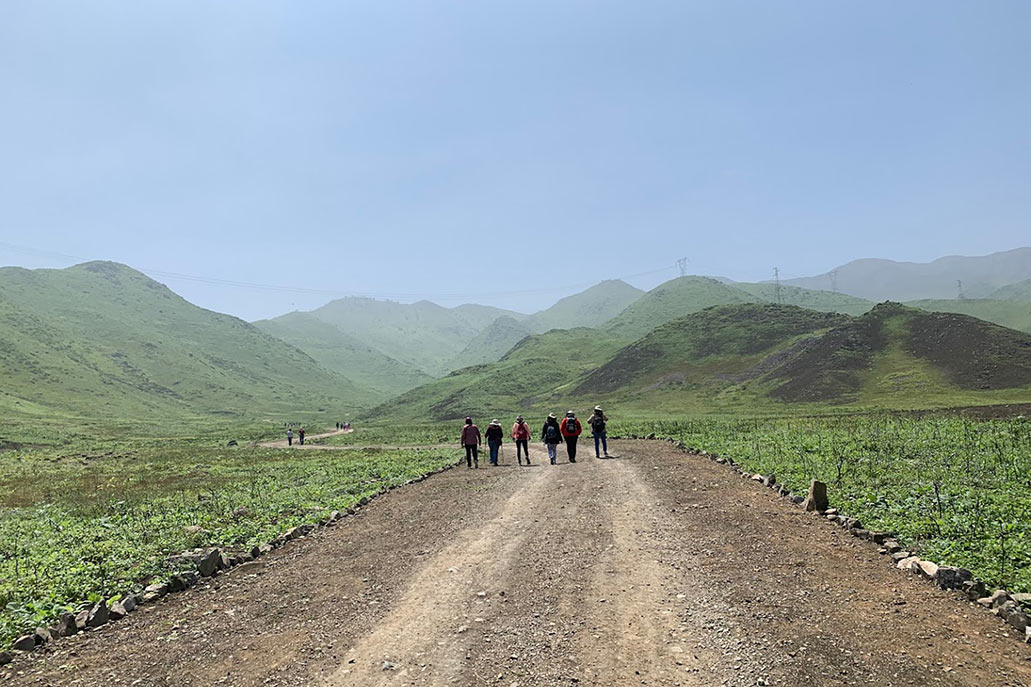8 hills in Lima that you must visit
Lima has a coastal geography flanked by Andean foothills whose humidity forms beautiful wetlands full of vegetation and wildlife. Throughout the city itself you can enjoy these green landscapes. Between June and November is when these landscapes turn green and show their best face. There you can practice adventure sports. There are also camping areas. Get to know 9 hills in Lima that you must visit!
Content
The hills of Amancaes
The Amancaes hills cover more than 237 hectares in the territories of the districts of Rímac, San Juan de Lurigancho and Independencia. Due to its proximity to the city, there are several dangers that threaten this area full of vegetation and wildlife. Thus, in 2013 it was included in the list of Fragile Ecosystems of the Ministry of Agriculture and Irrigation of Peru.
The hills of Amancaes stand out for their rocky outcrops. There you can see plants such as cacti, nettles, caiguas, potatoes, wild tomatoes and other seasonal species. Its name is due to the proliferation of the amancaes flower. Your complete tour can take more than 3 hours. Lima municipalities usually organize group tours from time to time.
- Location: In the limits of the Lima districts of Rímac, San Juan de Lurigancho and Independencia.
- Entry price: Free outings organized by the Department of Tourism of the Municipality of Rímac.
The hills of Mangomarca
The Mangomarca hills cover an area of 500 hectares full of vegetation. It is located in the town of Mangomarca in the district of San Juan de Lurigancho. There, in addition to its great diversity, there are remains belonging to the Chivateros culture. 18 species of birds, 40 types of plants and more have been recorded there.
The hills of Mangomarca are threatened by the voracious growth of Lima. You enter there through the ‘Fortaleza de Campoy’ sector. The tour can take several hours. Guided tours are organized by the Hills of Mangomarca Ecotourism Association.
- Location: Campoy Fortress, Mangomarca – San Juan de Lurigancho.
- Entry price: Guided tours are free and organized by the Hills of Mangomarca Ecotourism Association.
The hills of Lucumo
The hills of Lúcumo are located south of Lima in the Pachacamac district (35 kilometers from the city center). It covers an area of approximately 150 hectares. There you can do adventure sports and also enjoy the great variety of plants, birds and even mammals.
In the hills of Lúcumo you can also see cave paintings and the famous amancaes flower. Visitors usually make bicycle circuits there. Visits can be made together with the Hills of Lucumo Ecotourism Circuit Association. Tickets are purchased at the entrance gate. The tour with a local guide is optional. The right to camp costs 12 soles.
- Location: Jose Quinones Avenue Mz. U Lot 7, Quebrada Verda Rural Population Center, Pachacamac.
- Entry price: 10 soles adults / 5.50 soles for older adults / children under 11 years 5.50 soles.
The hills of Pamplona
The hills of Pamplona are located in the sector of the same name in the district of San Juan de Miraflores (although they also cover territories of the districts of Surco and La Molina). It covers an area of approximately 37.5 hectares. Due to land traffic, the place is in danger of disappearing. It also offers bike routes.
In the hills of Pamplona you can see a diversity of plants, birds and more. It highlights the flower of amancaes, the wild potato, the wand of San José, the begonia of the rocks and more. The circuit begins in the Flor de Amancaes human settlement. The visit can be made with the Organization of Hills of Pamplona.
- Location: Flor de Amancaes Human Settlement s/n, San Juan de Miraflores.
- Entry price: Free admission.
The hills of Paraiso
The hills of Paraíso are located in the district of Villa María del Triunfo. Covers an area of 1,700 hectares, which can be traveled on a path of up to 2.5 kilometers (walks between 2 to 3 hours). It stands out for its variety of plants, birds and animals where you can see the famous vizcacha.
But in the hills of Paraíso you can also see sand owls, kestrels, parrots, sparrows, hummingbirds as well as the tara trees, the huarango, the myth and the beautiful amancaes flower. The residents of Villa María del Triunfo voluntarily support its conservation and dissemination.
- Location: Jose Carlos Mariátegui sector, s/n, Villa María del Triunfo.
- Entry price: Free admission / Booking of guided tours online.
The hills of Primavera
To the north of the city of Lima, in the district of Carabayllo, is this natural environment that covers approximately 506 hectares. These hills stand out for their great diversity of flora and fauna. It is estimated that 102 species of plants, flowers and trees live there. It also houses 39 species including birds, insects and rodents.
Hills of Spring are protected by the Hills of Spring Ecological Association through recycling programs, care for the environment and tree adoptions. The works of the municipality of Carabayllo will bring a tourist circuit around the place. Currently the visit is free.
- Location: APV Primavera s/n, Carabayllo.
- Entry price: Free.
The hills of Lachay
The hills of Lachay in the small north of the department of Lima are one of the most touristic natural spaces in the city (97 kilometers from the city center). It is known as the ‘oasis of the mist’ because of the vapors that come from the coast. It covers an area of 5,070 hectares. It belongs to the district of Huacho.
In the hills of Lachay, visitors can take different tourist routes according to the attractions and landscapes that they can appreciate: the Zorro circuit, the Partridge circuit, the Tara circuit, the viewpoint circuit and more. You can also camp there. Also noteworthy are the myth, the huarango, the toothpick, the kestrel, the coastal fox, long-eared mice, the pajonal cat and more.
- Location: Kilometer 105 of the North Pan-American Highway, Huacho.
- Entry price: Foreign adults 30 soles / Peruvian adults 16 soles / children under 16 years 5 soles.
The hills of Asia
The hills of Asia are located in the district of the same name, at kilometer 100 of the Panamericana Sur highway (south of Lima). It covers an area of approximately 10 thousand hectares. There you can see a diversity of plants, flowers and trees where the tara, the huarango and more stand out. Also various species of birds such as the cactus canastero, the Raimondi chiringue, the thick-billed pampas and more.
The circuit through the hills of Asia follows a well-defined path and can take approximately 3 hours. Among the species of animals you can see the vizcacha, the coastal foxes and more. Its altitude ranges from 270 to 890 meters above sea level. The site is often filled with mist.
- Location: Kilometer 101 of the Panamericana Sur highway, Asia – Cañete District.
- Entry price: General admission 5 soles per visitor.
By Machupicchu Terra – Last updated, August 23, 2023
